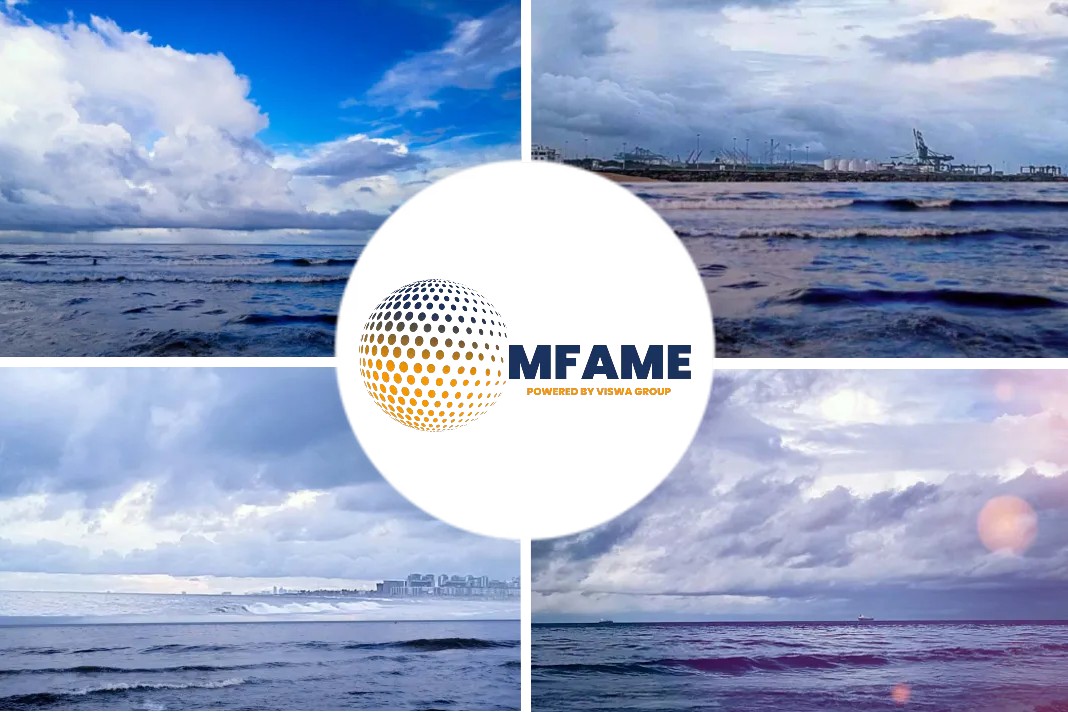- Wind energy touted to be future of ship propulsion with MAN developing an ammonia two-stroke engine.
- Ammonia makes efficient use of electricity than making either liquefied or compressed hydrogen.
- 600-MW wind farm with a 200-MW ammonia plant could generate around 24 tonnes an hour, enough to fuel three and a half mid-sized container ships with 20 MW engines.
- Experts predict that by 2029 there could be the potential to fuel nearly 19,000 mid-sized container ships with wind-sourced ammonia.
One way or another, wind will feature strongly in the future of ship propulsion.
Ammonia-fueled engine
Last week we reported that MAN Energy Solutions will develop an ammonia-fueled two-stroke engine. Siemens Gamesa approached the company with preliminary plans to make the fuel from excess electricity at its wind farms.
Sourcing ammonia this way makes sense. Siemens has established that it is a more efficient use of electricity than making either liquefied or compressed hydrogen. The resulting fuel is also more stable, easier to handle and more energy dense than any form of hydrogen – so, as discussed last week, deep-sea vessels might not need to be bigger or bunker more often.
Abundant source
Wind-sourced ammonia would also be abundant. A 600-MW wind-farm with a 200-MW ammonia plant could generate around 24 tonnes an hour, enough to fuel three and a half mid-sized container ships (with 20 MW engines). Siemens’ installed base (91 GW) could power 531 such vessels. Global wind capacity reached 539 GW in 2017 (the last year for which figures are freely available) and is set to grow six-fold over the next decade. By 2029 there could be the potential to fuel nearly 19,000 mid-sized container ships with wind-sourced ammonia.
Is there an easier way?
An interesting graphic started circulating on Twitter last week, showing the energy losses involved in converting wind energy to propulsion by way of electro-fuels According to the author, naval architect Herbert Blümel, only 10% of potential wind power reaches propulsion this way.
Direct wind power, good old-fashioned sailing, suffers no such losses. Nor does it rely on any land-based infrastructure or require any spend on power. These are sound reasons – environmental, logistical and financial – for sailing. Equally, there are clear objections. Among them, direct wind power is only viable on specific routes and, given the bulk of sails and rotors, on specific ships.
Which will win, wind original or wind 2.0?
Whatever the losses, wind-sourced electricity is set to be abundant and the resulting liquid fuel fits in with the current mode of powering ships by internal combustion engines. Sailing ships will occupy a niche – a fast-growing niche if current interest is an indicator – for those on specific routes and operations who are seeking a specific emissions profile.
Conclusion
In a future of diverse fuels and hybrid ships, it is even possible that we will see a ship powered by both wind-sourced ammonia and direct wind power. For now these two alternatives highlight the way in which shipping is, through methods old and new, coming back around to wind.
Did you subscribe to our daily newsletter?
It’s free! Click here to Subscribe!
Source: mpropulsion

















